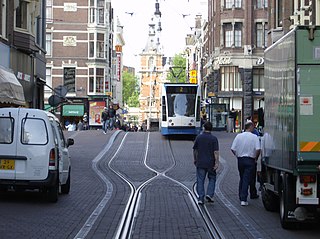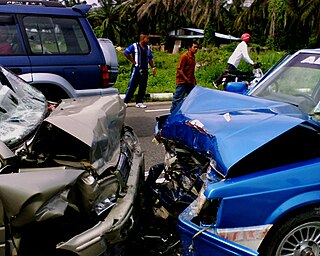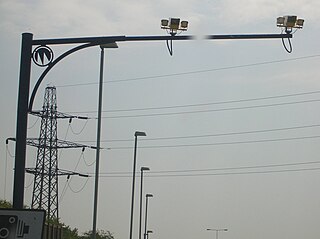Related Research Articles

The European Environment Agency (EEA) is the agency of the European Union (EU) which provides independent information on the environment.

The United Nations Environment Programme (UNEP) is responsible for coordinating responses to environmental issues within the United Nations system. It was established by Maurice Strong, its first director, after the United Nations Conference on the Human Environment in Stockholm in June 1972. Its mandate is to provide leadership, deliver science and develop solutions on a wide range of issues, including climate change, the management of marine and terrestrial ecosystems, and green economic development. The organization also develops international environmental agreements; publishes and promotes environmental science and helps national governments achieve environmental targets.

The United Nations Economic Commission for Europe is one of the five regional commissions under the jurisdiction of the United Nations Economic and Social Council. It was established in order to promote economic cooperation and integrations among its member states.

Transportation planning is the process of defining future policies, goals, investments, and spatial planning designs to prepare for future needs to move people and goods to destinations. As practiced today, it is a collaborative process that incorporates the input of many stakeholders including various government agencies, the public and private businesses. Transportation planners apply a multi-modal and/or comprehensive approach to analyzing the wide range of alternatives and impacts on the transportation system to influence beneficial outcomes.

The Scottish Greens are a green political party in Scotland. The party has five MSPs in the Scottish Parliament as of December 2020. As of the 2017 local elections, the party sits on six of the 32 Scottish local councils, with a total of 19 councillors.

Thames Gateway is a term applied to an area around the Thames Estuary in the context of discourse around regeneration and further urbanisation. The term was first coined by the UK government and applies to an area of land stretching 70 kilometres (43 mi) east from inner east and south-east London on both sides of the River Thames and the Thames Estuary. It stretches from Westferry in Tower Hamlets to the Isle of Sheppey/Southend-on-Sea and extends across three ceremonial counties.

Road traffic safety refers to the methods and measures used to prevent road users from being killed or seriously injured. Typical road users include pedestrians, cyclists, motorists, vehicle passengers, horse riders, and passengers of on-road public transport.

Sustainable transport refers to the broad subject of transport that is sustainable in the senses of social, environmental and climate impacts. Components for evaluating sustainability include the particular vehicles used for road, water or air transport; the source of energy; and the infrastructure used to accommodate the transport. Transport operations and logistics as well as transit-oriented development are also involved in evaluation. Transportation sustainability is largely being measured by transportation system effectiveness and efficiency as well as the environmental and climate impacts of the system.

Bicycle safety is the use of road traffic safety practices to reduce risk associated with cycling. Risk can be defined as the number of incidents occurring for a given amount of cycling. In many countries both the number of incidents and the amount of cycling are not well known. Non-fatal accidents often go unreported and bicycle use is only occasionally monitored. Some of this subject matter is hotly debated: for example, the discussions as to whether bicycle helmets or cyclepaths really improve safety. The merits of obeying the rules of the road including the use of bicycle lighting at night are less controversial.
The RAC Foundation is a registered charity.

The United Kingdom has a network of roads, of varied quality and capacity, totalling about 262,300 miles (422,100 km). Road distances are shown in miles or yards and UK speed limits are indicated in miles per hour (mph) or by the use of the national speed limit (NSL) symbol. Some vehicle categories have various lower maximum limits enforced by speed limiters. A unified numbering system is in place for Great Britain, whilst in Northern Ireland, there is no available explanation for the allocation of road numbers.

The Transport Direct Programme was a division of the UK Department for Transport (DfT) to develop standards, data and better information technology systems to support public transport. It developed and operates the Transport Direct Portal which is a public facing multi-modal journey planner. It also supports the creation and management of comprehensive databases of all public transport movements in the United Kingdom with Traveline. During 2010 two key datasets were released as Open Data and published on www.data.gov.uk.
The Royal Commission on Environmental Pollution in the United Kingdom was created under Royal Warrant in 1970 to advise the Queen, Government, Parliament and the public on environmental issues. It was closed on 1 April 2011, as part of the Coalition Government's spending cuts.
Road protests in the United Kingdom usually occur as a reaction to a stated intention by the empowered authorities to build a new road, or to modify an existing road. Some of the reasons for opposition to opening new roads include: a desire to reduce air pollution and thus not wishing to incentivise increased or sustained car usage, and/or a desire to reduce or maintain low noise pollution by not having or increasing the use of motor vehicles in the area of the planned/proposed road. Protests may also be made by those wishing to see new roads built or improvements made to existing roads. Motivations for protests may be altruistic or selfish. In some cases, protests have also acted as a training ground for individuals and groups who continue to be active in campaigning and advocacy.
The Eddington Transport Study is an examination, by Sir Rod Eddington, of the impact of transport decisions on the economy and the environment of the United Kingdom, with recommendations on how the transport network should be modernised. The study was commissioned by the UK government, and a report of the study was published by them on 1 December 2006.

A traffic collision, also called a motor vehicle collision, car accident, or car crash, occurs when a vehicle collides with another vehicle, pedestrian, animal, road debris, or other stationary obstruction, such as a tree, pole or building. Traffic collisions often result in injury, disability, death, and property damage as well as financial costs to both society and the individuals involved. Road transport is the most dangerous situation people deal with on a daily basis, but casualty figures from such incidents attract less media attention than other, less frequent types of tragedy.

The Institute for Transportation and Development Policy (ITDP) is a non-governmental non-profit organization that focuses on developing bus rapid transit (BRT) systems, promoting biking, walking, and non-motorized transport, and improving private bus operators margins. Other programs include parking reform, traffic demand management, and global climate and transport policy. According to its mission statement, ITDP is committed to "promoting sustainable and equitable transportation worldwide."

Road speed limits in the United Kingdom are used to define the maximum legal speed for vehicles using public roads in the UK. Speed limits are one of the measures available to attempt to control traffic speeds, reduce negative environmental effects of traffic, increase fuel use efficiency and satisfy local community wishes. The speed limit in each location is indicated on a nearby traffic sign or by the presence of street lighting. Signs show speed limits in miles per hour (mph) or the national speed limit (NSL) sign may be used.

Road speed limit enforcement in the United Kingdom is the action taken by appropriately empowered authorities to attempt to persuade road vehicle users to comply with the speed limits in force on the UK's roads. Methods used include those for detection and prosecution of contraventions such as roadside fixed speed cameras, average speed cameras, and police-operated LIDAR speed guns or older radar speed guns. Vehicle activated signs and Community Speed Watch schemes are used to encourage compliance. Some classes of vehicles are fitted with speed limiters and intelligent speed adaptation is being trialled in some places on a voluntary basis.
References
- ↑ "Reports". Royal Commission of Environmental Polition. Archived from the original on 22 March 2011. Retrieved 11 March 2010.CS1 maint: discouraged parameter (link)
- ↑ "Head-on collision over transport: The British government has received its sternest warning yet that its unflagging support for the car is seriously at odds with its own green principles". New Scientist. Retrieved 11 March 2010.CS1 maint: discouraged parameter (link)